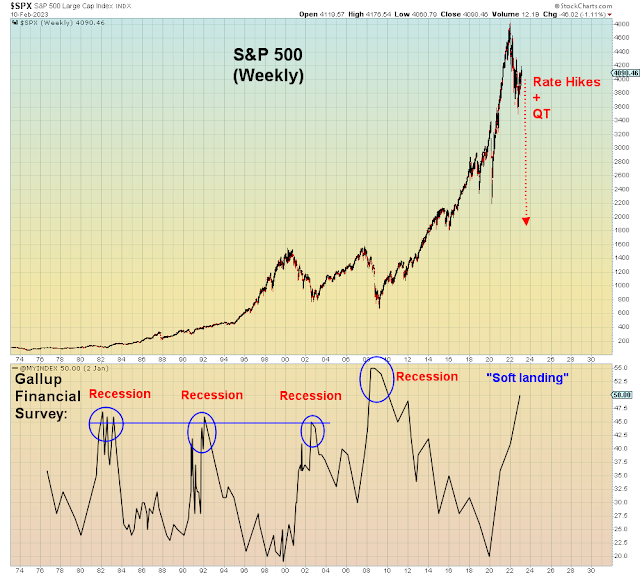Central banks bailed them out of pandemic, so they went ALL IN at the end of the cycle. THE END.
I've been recalcitrant in my blogging lately. Bullish malaise has apparently comatized even the most bearish of bloggers. Something about collapsed volume and volatility will do that. However, next week is the anniversary of the pandemic crash three years ago AND the start of the war in Ukraine one year ago. So, it would be highly ironic if all of this widely ignored risk all exploded in the same timeframe. They didn't see it last time, and clearly they are clueless this time around as well. Three years ago next week, at the start of the crash, the weekend Barron's lead story claimed "It's STILL A Bull Market Everywhere You Look". It was already too late to get out.
Feb. 21st, 2020:
Since the Fed hiked rates by 1/4 point at their meeting two weeks ago, the economic data has all run on the side of hot. And yet gamblers have been totally unperturbed by rising rate risk. To paraphrase Zerohedge: rising rates means rising recession risk, rising crash risk, and therefore rising chance of rate cuts. To get the rate cuts, you have to first get the rate hikes, the recession, and the crash. Meaning the bullish hypothesis is the same as the bearish hypothesis. Crack dosage being the only difference.
I would remind everyone at this juncture that it wasn't emergency rate cuts in March 2020 that saved markets and it wasn't the restart of QE - those were both limit DOWN events. What saved markets is when the Fed panicked and took over the Treasury bond market. Something that is so far off the radar right now, there is not the slightest inkling that it will happen. Whereas back in 2020, the Fed was already in rate cutting mode and QE mode, due to the Repo crisis.
In other words, the exorbitant Fed bailout that took place three years ago is the reason why inflation is running too hot today, and it's also the entire premise of the bullish hypothesis. We all agree a bailout is inevitable, but from what level?
Not this one.
This week's CPI ran hot, but that also didn't faze markets. Year over year, CPI dropped from 6.5% to 6.4%. That's after 18 1/4 point rate hikes in one year - more than took place in the three years leading up to the 2008 GFC. As we see below, back in 2007 when the Fed pivoted, the CPI shot up 4%. If that were to happen now, the CPI would blow through 10%.
Which means the Fed can't pivot until there's a crash. Which fortunately is the bullish hypothesis anyways.
All because investors believed that THIS Fed could keep interest rates, demand, profits, equity multiples, stocks, housing prices all at record highs.
While bringing inflation down.
For the first time in World history.
Chart gallery:
Today's technicians are TOTALLY clueless. This right shoulder is a mess compared to the left shoulder.
Aussie disconnect deja vu of Feb 2020:
Dax deja vu
In summary, the most bullish thing I can say is that as of this moment, it's still a bull market everywhere you look.

















































